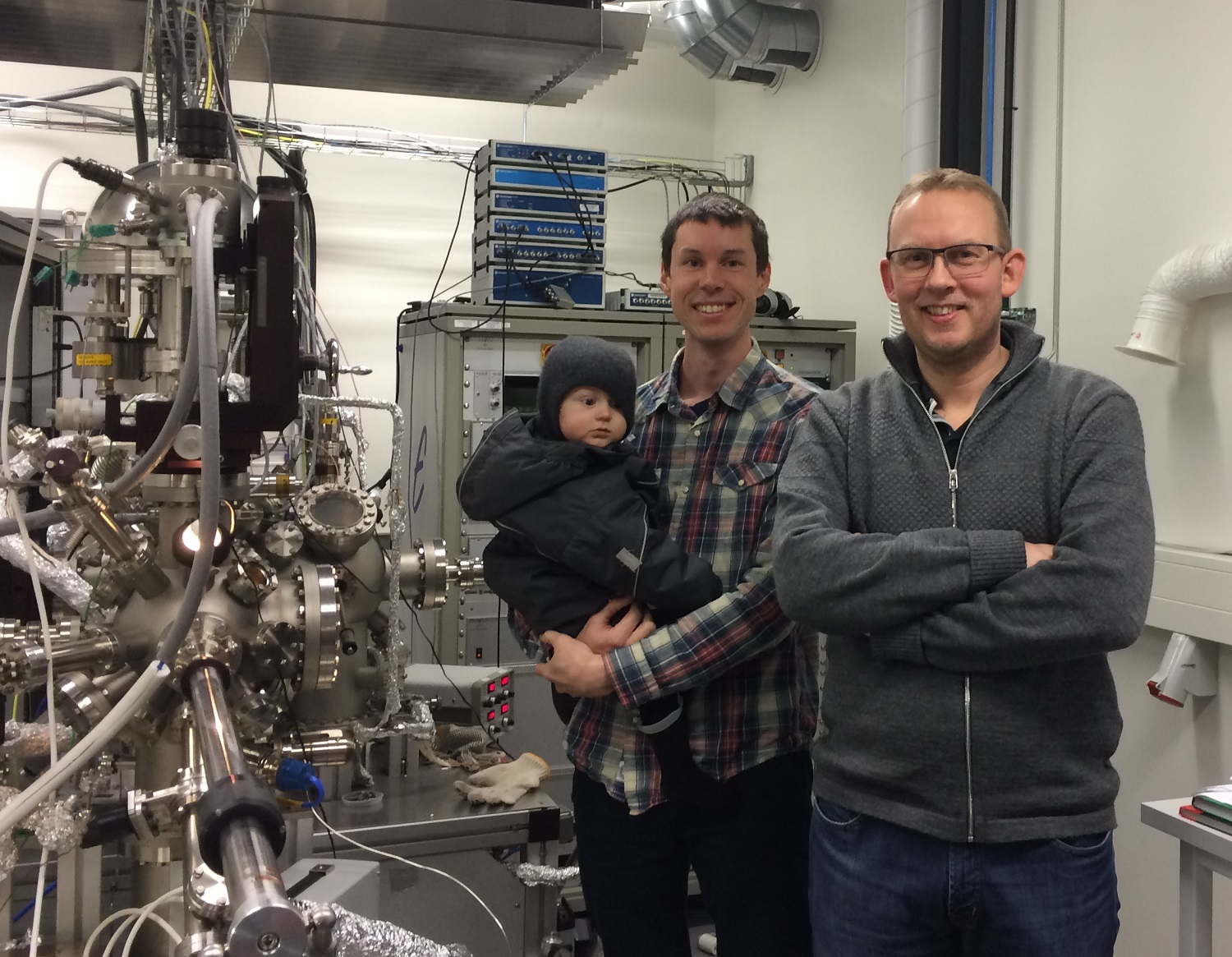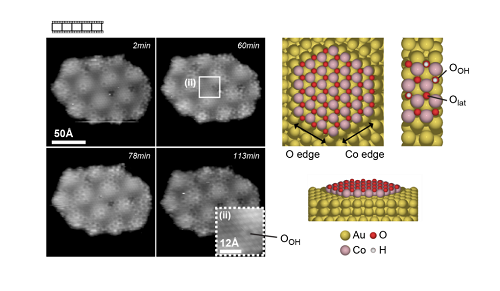Nature Communications article on how water splits up on cobalt oxides
Atom-resolved Scanning Tunneling Microscopy movies shed new light on the fundamental chemical interaction between water molecules and a cobalt oxide catalyst

The paper published in Nature Communications demonstrates how Scanning Tunneling Microscopy has been used for the first time to visualize the elementary steps involved in water dissociation on cobalt oxide – a reaction that attracts strong fundamental attention due to the potential use and development of cobalt oxide structures as cheap and earth abundant water splitting catalysts for production of H2 fuel. In atom-resolved STM movies recorded during reaction with water, the group has managed to image sequences that unequivocally point to the edge sites of the cobalt oxide islands as the active sites.
The work was performed in the group of Jeppe Lauritsen by PhD student Jakob Fester and postdoc Alex Walton (now at University of Manchester) in collaboration with Stanford University and was supported by the Lundbeck Foundation and VILLUM Foundation.
Contact: Jeppe V. Lauritsen (jvang@inano.au.dk)

Figure: Structure models of cobalt oxide nanoislands and images from an STM movie recorded in water vapor environment.
Link to article : http://rdcu.be/oUnA
“Edge reactivity and water-assisted dissociation on cobalt oxide nanoislands”
J. Fester, M. Garcıa-Melchor, A.S. Walton, M. Bajdich, Z. Li, L. Lammich, A. Vojvodic, J.V. Lauritsen
